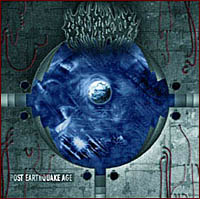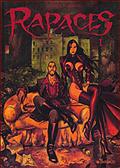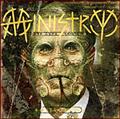BAALPHEGOR (sp) - Post Earthquake Age (2006)

Label : Fastbeast Entertainement
Sortie du Scud : 18 août 2006
Pays : Espagne
Genre : Death Metal Progressif
Type : Album
Playtime : 9 Titres - 36 Mins
Mis à part certaines formations avérées de Metal extrême, citons les madrilènes de HAEMORRHAGE et de AVULSED ou les Black Metalleux de FOSCOR, l’Espagne n’est pas le bastion Européen le plus représentatif du Metal. Rajoutons donc BAALPHEGOR qui saura à coup sûr trouver sa place au sein de la scène Death hispanique. Déjà, il ne faut pas les confondre avec le groupe de Black Metal Autrichien BELPHEGOR avec lesquels ils ne partagent que le même patronyme, BAALPHEGOR, avec une nuance sur l’écriture du mot. Comme on le précisait plus haut dans le texte, BAALPHEGOR est un groupuscule de Death Metal tout droit sorti de la péninsule Ibérique, et pour être plus précis de Catalogne, à Girone. Ici, point de plages et de discothèques en bord de mer, le quintet Catalan en est avec Post Earthquake Age à sa seconde réalisation studio, et ce après un Mcd en 1998 sobrement intitulé Baalphegor suivi cinq ans plus tard de leur première création The End of Descent. Ayant fait ses débuts musicaux en 1996, il en ressort que BAALPHEGOR ait mis un point d’honneur à exécuter ses titres soit tantôt véloces soit tantôt lents, une marque de fabrique que l’on subit en gros à travers l’écoute de ces neuf pistes. Dotés d’un indéniable bagage technique, le groupe Catalan mené par David Fernandez (guitares) pourrait ressembler, si l’on faisait une comparaison, à du MORBID ANGEL pour ses parties de Death déstructurées et ses soli tout droit sortis d’une autre planète.
Groupe Européen puisque signé chez le label helvétique Fastbeast, BAALPHEGOR est un concentré de riffs catchy, de voix agressives avec des breaks très portés sur les ambiances Prog’ comme l’atteste le break du morceau « Humtec Sphere » et son climat lunaire escorté à la contrebasse ou sur le titre « Ansphina » où l’on retrouve des paramètres similaires. La production signée David Fernandez bénéficie d’un son transparent et omnipotent qui rend justice aux arrangements apportés aux compositions. BAALPHEGOR offre un panel de variation rythmiques, un Death technique et étudié, certains titres nous font penser d’ailleurs à MORBID ANGEL (encore eux !) comme « The New Adoreds », le meilleur morceau d’ailleurs. Surprenant et intéressant. Technique impose, les musiciens ont recours à des plans jazzy et modernes pour habiller leurs morceaux comme « New Coming Are Slave » ou la plage instrumentale participant à la création d’une ambiance futuriste comme « Moments of The Creation » et l’intro de « Post Earthquake Age ».
Un bon exercice de style qui ravira les amateurs à coup sûr. On ne dénombre pas trop d’anomalies si ce n’est peut-être un léger manque de personnalité et notamment un chant ordinaire et linéaire. Toutefois le style offrait de multiples alternatives, or on a l’impression que Miguel Herrera (chants) ne maîtrise que les growls et hurlements et fait tâche par rapport à la technicité de ses camarades. Dans le même temps, on peut reprocher à la batterie d’être trop triggée et de donner un aspect robotisé à la musique parfois assez désagréable. Dans le but de pouvoir rivaliser avec les ténors du genre, le David Fernandez et ses compagnons devront insuffler un semblant de vie à leurs compositions et BAALPHEGOR devrait normalement se constituer un auditoire de fidèles dévoués.
Ajouté : Jeudi 02 Novembre 2006
Chroniqueur : Loki
Score :    
Lien en relation: Baalphegor Website
Hits: 15015
|













